
The Paris Métro is a rapid transit system in the Paris metropolitan area, France. A symbol of the city, it is known for its density within the capital's territorial limits, uniform architecture and unique entrances influenced by Art Nouveau. It is mostly underground and 226.9 kilometres (141.0 mi) long. It has 308 stations, of which 64 have transfers between lines. There are 16 lines, numbered 1 to 14, with two lines, 3bis and 7bis, named because they started out as branches of Line 3 and Line 7 respectively. Line 1 and Line 14 are automated. Lines are identified on maps by number and colour, with the direction of travel indicated by the terminus.

Boulogne-sur-Mer, often called just Boulogne, is a coastal city in Northern France. It is a sub-prefecture of the department of Pas-de-Calais. Boulogne lies on the Côte d'Opale, a touristic stretch of French coast on the English Channel between Calais and Normandy, and the most visited location in the region after the Lille conurbation. Boulogne is its department's second-largest city after Calais, and the 183rd-largest in France. It is also the country's largest fishing port, specialising in herring.
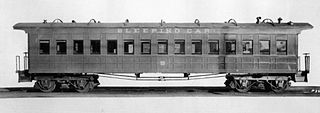
The sleeping car or sleeper is a railway passenger car that can accommodate all passengers in beds of one kind or another, for the purpose of sleeping. George Pullman was the American innovator of the sleeper car.

The Gare du Nord, officially Paris-Nord, is one of the six large mainline railway station termini in Paris, France. The station accommodates the trains that run between the capital and northern France via the Paris–Lille railway, as well as to international destinations in Belgium, Germany, the Netherlands and the United Kingdom. Located in the northern part of Paris near the Gare de l'Est in the 10th arrondissement, the Gare du Nord offers connections with several urban transport lines, including Paris Métro, RER and buses. The majority of its passengers have been commuters travelling between the northern suburbs of Paris and outlying towns. It is the busiest railway station in Europe by total passenger numbers; in 2015, the Gare du Nord saw more than 700,000 passengers per day.
Cassandre, pseudonym of Adolphe Jean-Marie Mouron was a French painter, commercial poster artist, and typeface designer.

The Ligne à Grande Vitesse Nord, typically shortened to LGV Nord, is a French 333-kilometre (207 mi)-long high-speed rail line, opened in 1993, that connects Paris to the Belgian border and the Channel Tunnel via Lille.
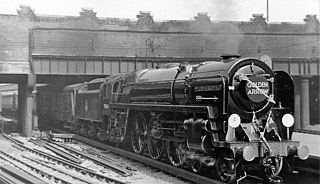
The Golden Arrow was a luxury boat train of the Southern Railway and later British Railways. It linked London with Dover, where passengers took the ferry to Calais to join the Flèche d’Or of the Chemin de Fer du Nord and later SNCF which took them on to Paris.

Newrest Wagons-Lits, formerly Compagnie internationale des wagons-lits, also CIWL, Compagnie des Wagons-Lits, or just Wagons-Lits, is a division of Newrest particularly known for its on-train catering and sleeping car services, as well as being the historical operator of the Orient Express.
The Chemins de fer du Nord, often referred to simply as the Nord company, was a rail transport company, created in Paris, France, in September 1845. It was owned by, among others, de Rothschild Frères of France, N M Rothschild & Sons of London, England, Charles Laffitte and Edward Blount, and Baron Jean–Henri Hottinguer. Baron James de Rothschild served as the company's president from its inception until his death in 1868.
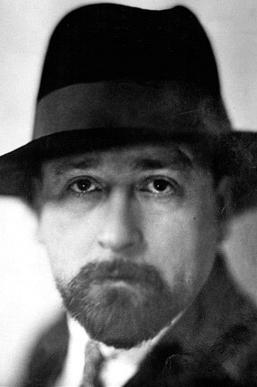
Albert Londres was a French journalist and writer. One of the inventors of investigative journalism, Londres not only reported news but created it, and reported it from a personal perspective. He criticized abuses of colonialism such as forced labour. Albert Londres gave his name to a journalism prize, the Prix Albert-Londres, for Francophone journalists.

Paris Métro Line 10 is one of 16 metro lines in Paris, France. The line links the Boulogne – Pont de Saint Cloud metro station in Boulogne in the west with the Gare d'Austerlitz, travelling under the neighborhoods situated on the Rive Gauche in the southern half of Paris and the commune of Boulogne-Billancourt. Its two termini are Gare d'Austerlitz and Boulogne – Pont de Saint-Cloud.
The Night Ferry was an international boat train from London Victoria to Paris Gare du Nord that crossed the English Channel on a train ferry. It ran from 1936 until 1939 when it ceased due to the onset of World War II. It resumed in 1947, ceasing in 1980. It was operated by Compagnie Internationale des Wagons-Lits until 1977 and then British Rail.

Lille-Europe station is a SNCF railway station in Lille, France, on the LGV Nord high-speed railway. The station is primarily used for international Eurostar and long-distance SNCF TGV services, although some high-speed regional trains also call at the station. The station was built in 1993 to be used as a through station for trains between the UK, Belgium, and the Netherlands, as well as French TGV services, except those coming from Paris which normally terminate at Lille-Flandres. There is a 400 m (1,300 ft) walking distance between the two stations, which are also adjacent stops on the Lille Metro.

Amiens station is the main railway station for the Northern French city of Amiens.
The Calais-Mediterranée Express was a French luxury night express train which operated from 1886 to 2003. It gained international fame as the preferred train of wealthy and famous passengers between Calais and the French Riviera during the interwar period. It was colloquially referred to as Le Train Bleu in French and the Blue Train in English because of its dark-blue sleeping cars.

The Longueau–Boulogne railway is a French railway which runs from a junction with the Paris-Lille railway at Longueau to the coastal port of Boulogne. A double track railway it is 171 kilometres long. Until the start of the Eurostar service from London to Paris in 1994 via LGV Nord it was the main route for the boat trains to Paris which met the ships carrying passengers from Great Britain. As of August 2011 the line is used by Intercités services from Paris to Boulogne, TGV services from Rang-du-Fliers via Calais-Fréthun to Lille-Europe and local TER Hauts-de-France services.
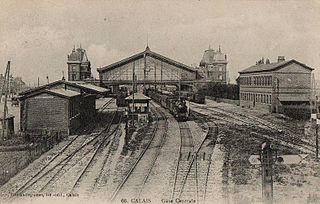
The Boulogne–Calais railway is an electrified double track railway running between the ports of Boulogne-sur-Mer and Calais in France. An extension of the Longueau–Boulogne railway it meets the Lille–Fontinettes railway and Coudekerque-Branche–Fontinettes railway to Dunkirk at Les Fontinettes station in Calais.
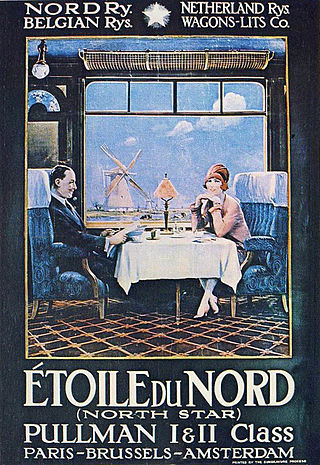
The Étoile du Nord was an international express train. It linked Paris Nord in Paris, France, with Brussels, Belgium, and, for most of its existence, also with Amsterdam CS in Amsterdam, the Netherlands. Its name meant literally "Star of the North", and alluded not only to its route heading north from Paris, but also to one of its original operators, the Chemin de Fer du Nord.

The Île de France was an international express train on the PBA route (Paris–Brussels–Amsterdam). The train was named after the French region surrounding Paris.

L'Oiseau Bleu was an international express train linking Antwerp with Paris. The train was named after the play L'Oiseau Bleu as a tribute to its author, the Belgian Nobel prize laureate Maurice Maeterlinck.
















